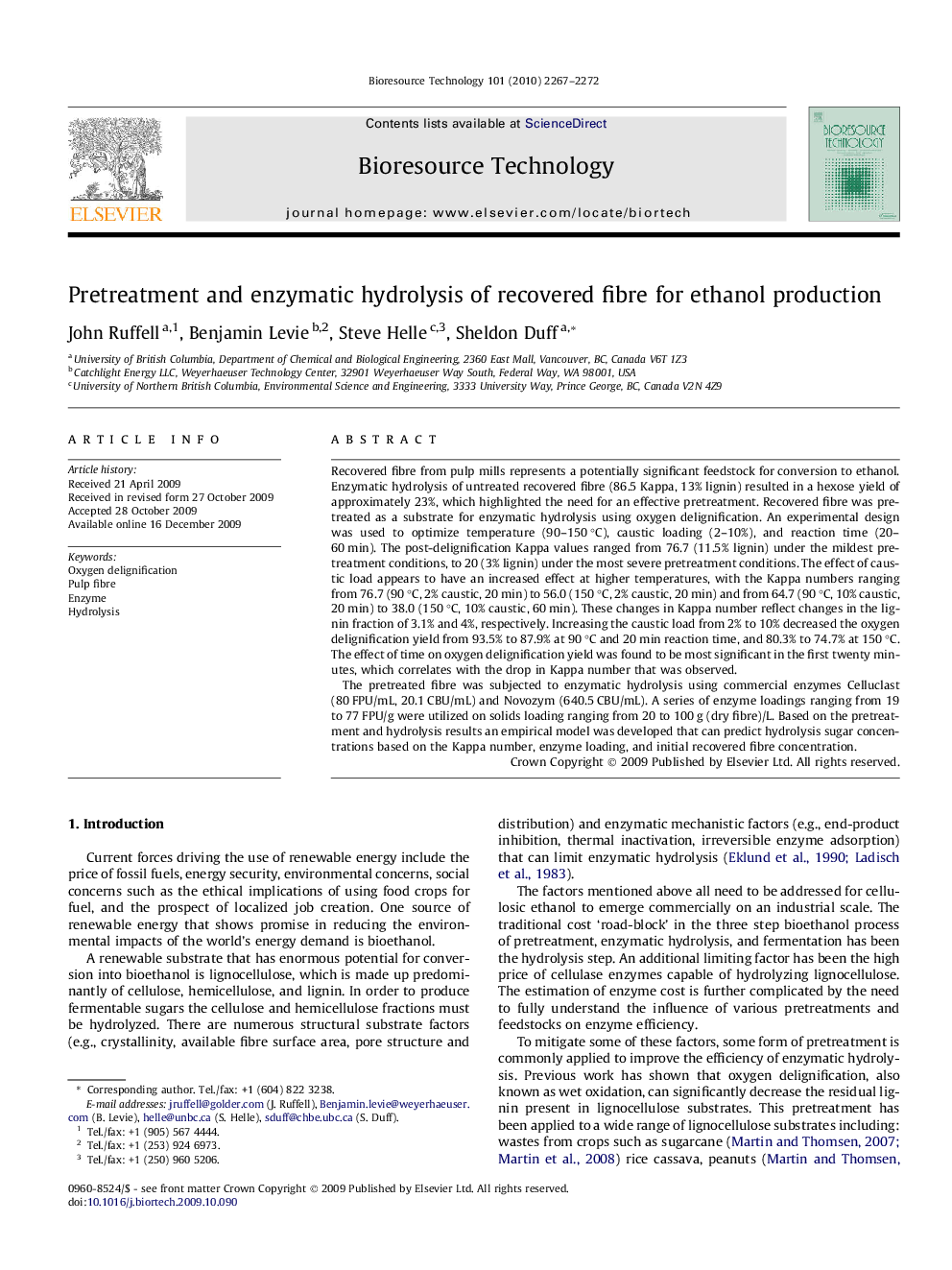| Article ID | Journal | Published Year | Pages | File Type |
|---|---|---|---|---|
| 683855 | Bioresource Technology | 2010 | 6 Pages |
Recovered fibre from pulp mills represents a potentially significant feedstock for conversion to ethanol. Enzymatic hydrolysis of untreated recovered fibre (86.5 Kappa, 13% lignin) resulted in a hexose yield of approximately 23%, which highlighted the need for an effective pretreatment. Recovered fibre was pretreated as a substrate for enzymatic hydrolysis using oxygen delignification. An experimental design was used to optimize temperature (90–150 °C), caustic loading (2–10%), and reaction time (20–60 min). The post-delignification Kappa values ranged from 76.7 (11.5% lignin) under the mildest pretreatment conditions, to 20 (3% lignin) under the most severe pretreatment conditions. The effect of caustic load appears to have an increased effect at higher temperatures, with the Kappa numbers ranging from 76.7 (90 °C, 2% caustic, 20 min) to 56.0 (150 °C, 2% caustic, 20 min) and from 64.7 (90 °C, 10% caustic, 20 min) to 38.0 (150 °C, 10% caustic, 60 min). These changes in Kappa number reflect changes in the lignin fraction of 3.1% and 4%, respectively. Increasing the caustic load from 2% to 10% decreased the oxygen delignification yield from 93.5% to 87.9% at 90 °C and 20 min reaction time, and 80.3% to 74.7% at 150 °C. The effect of time on oxygen delignification yield was found to be most significant in the first twenty minutes, which correlates with the drop in Kappa number that was observed.The pretreated fibre was subjected to enzymatic hydrolysis using commercial enzymes Celluclast (80 FPU/mL, 20.1 CBU/mL) and Novozym (640.5 CBU/mL). A series of enzyme loadings ranging from 19 to 77 FPU/g were utilized on solids loading ranging from 20 to 100 g (dry fibre)/L. Based on the pretreatment and hydrolysis results an empirical model was developed that can predict hydrolysis sugar concentrations based on the Kappa number, enzyme loading, and initial recovered fibre concentration.
